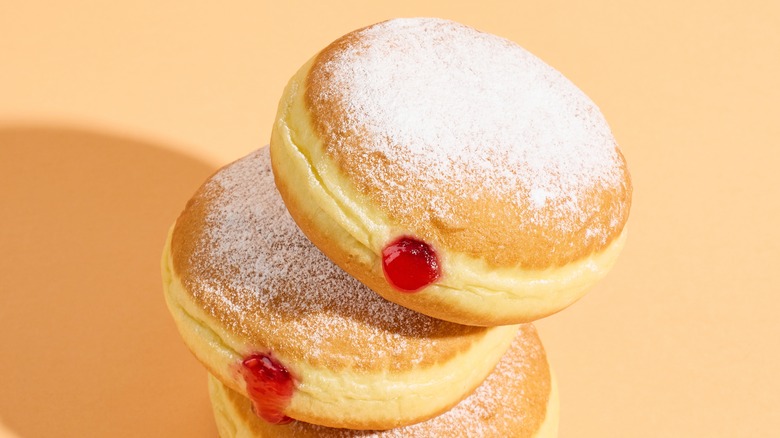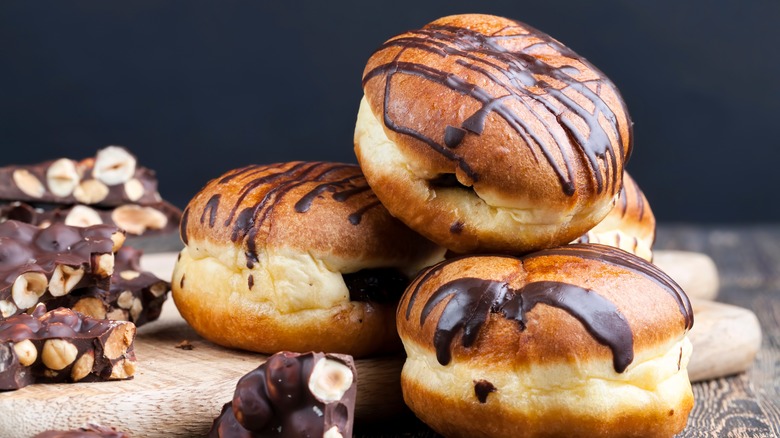What Exactly Is A Bismark Donut?
We know jelly-filled donuts as perfect golden circles, lightly dusted in powdered sugar, with bright red jelly gently oozing out. In the upper Midwest states or parts of Canada, you'll likely see the same donut labeled as a Bismarck (sometimes also spelled Bismark), named after Germany's Chancellor Otto von Bismarck by European immigrants who settled in these areas. These donuts are called Berliner, Krapfen, Kreppel, or Pfannkuchen throughout Germany, and are a popular treat at pre-Lent Karneval celebrations. Whatever the name, these donuts are defined by their lack of hole and jelly or creme filling.
The process of making a Bismarck donut is made is very similar to a standard donut. It is made from a yeast-risen dough and fried; however, the center is left intact before frying. Then, the donut is stuffed with a filling, most commonly a jelly or jam, but it can also be cream or chocolate. Most donuts get a glaze, but typically, this one does not; the final step is to dust a Bismarck with powdered sugar or regular sugar. Some Bismarcks that have a cream or chocolate filling will get a chocolate drizzle or glaze, but powdered sugar is still the most popular option.
Its intact center raises a question: if a donut doesn't have a hole, is it still classified as a donut? While German-style bear claws and jelly-filled donuts look a little different than the standard ring, the answer is yes, they still fit into the donut category.
Variations of the bismark donut
Whether you call it a Bismarck or Berliner, the dough used to make this donut remains essentially the same throughout the world. The size and shape may vary slightly; in America, jelly-filled or Bismarck donuts are typically the same size as other donuts. Berliners throughout Europe tend to be a more oblong shape and be slightly longer and larger than the average donut.
What changes the most between regions in the filling. The donut jelly used in America is typically raspberry or strawberry flavored and is thinner than jam; some donut chains, like Dunkin, use a mix of corn syrup and fruit concentrates instead of real jam or jelly. There is a huge variety of jams used in Germany for this type of donut, with rose hip, apricot, and plum jam being some of the most unique flavors.
Italy's Bomboloni donut follows the same structure as a Bismarck, but is filled with a pastry cream, and then rolled in regular white sugar rather than powered sugar. Technically, a Boston cream donut is also classified as a Bismarck donut. The filling for this special donut is pastry cream, and instead of powdered sugar, it gets a chocolate glaze. A Paczki is a Polish donut that is meant to be eaten on Fat Tuesday before fasting before Lent, as done in Germany. The difference is in the dough: Paczkis tend to have a richer, denser dough with butter.

